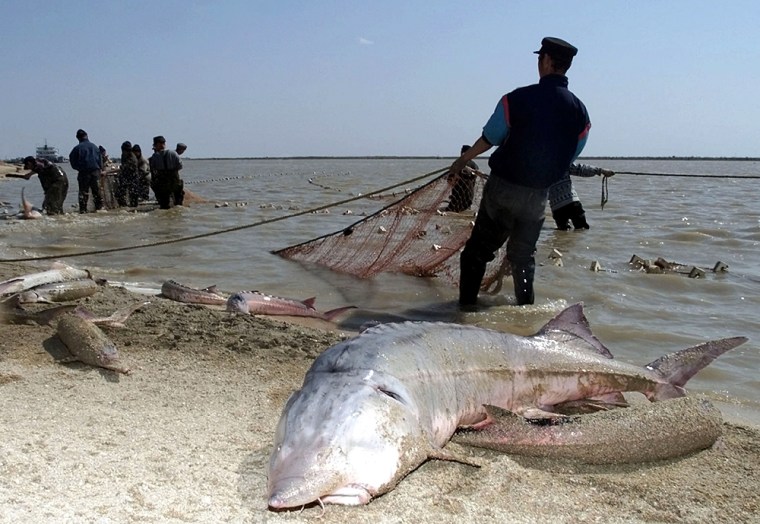The government said Tuesday it was listing the beluga sturgeon as a threatened species under the Endangered Species Act, which could lead to a reduction or ban of U.S. imports of the prized beluga caviar.
The listing, which came as the result of a petition from environmental groups, brings the country’s requirements for conserving the species in line with the specifications under the Convention on International Trade in Endangered Species, said Steve Williams, the Fish and Wildlife director.
The United States imports 80 percent of the world’s beluga caviar. Experts estimate legal trade in the black fish eggs to be worth more than $100 million a year, and the illegal catch in Russia, Azerbaijan, Kazakhstan and Turkmenistan is believed to be 10 times larger.
'Notable' population fall
Williams said there has been “a notable decrease in the wild beluga sturgeon population” due to unregulated overfishing, loss of spawning habitat and poaching to supply the black market beluga caviar trade.
Within six months, the government will decide whether to reduce or entirely ban U.S. imports of beluga caviar. Ken Stansell, Fish and Wildlife’s assistant director for international affairs, “could result in allowing the imports to continue under existing CITES regulations, whatever those might be, or it could range to a complete ban on imports into the United States.”
If no rule is proposed within six months, he said, the effect would be a total ban on further imports.
In the United States, there have some reports of attempts to farm white sturgeon as a captive-raised commercial fish, he said, and the new listing “would affect species whether they’re wild-caught or captive-raised.”
The listing was in response to legal action by three environmental groups — the Natural Resources Defense Council, the Wildlife Conservation Society and SeaWeb — which petitioned Fish and Wildlife in December 2000 to declare beluga sturgeon an endangered species.
“It’s encouraging that the government has acknowledged that the beluga sturgeon is heading toward extinction, but it’s very disappointing that it took no immediate action to protect the species,” said Ellen Pikitch, a marine biologist in Miami, who represents the groups.
She said even a ban six months from now would mean the government is “basically taking a pass on protection for this year” as most of the fishing season will be over by then.
Threatened, not endangered label
On the world’s legal wholesale market, a kilogram of premium beluga caviar, or 2.2 pounds, costs an average of $3,200, said Roddy Gabel, chief of Fish and Wildlife’s division of scientific authority.
Gabel said the sturgeon’s prospects are “threatened,” a lesser category than “endangered,” because some 2 million to 3 million are estimated to still exist, mostly in the Caspian and Black Seas, which both border Russia.
“We decided that calling this endangered, or a species on the brink of extinction is not really accurate,” he said. “It may become endangered if we don’t do something about it soon.”
Fish and Wildlife Service background is online at international.fws.gov.
